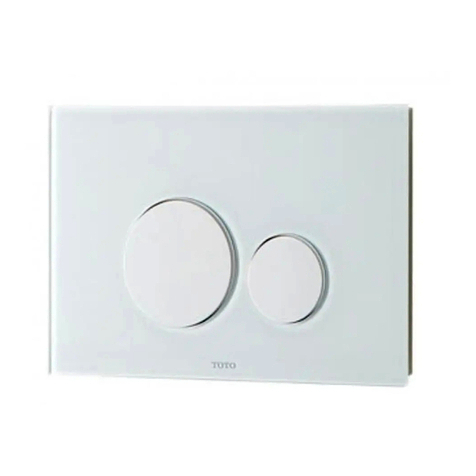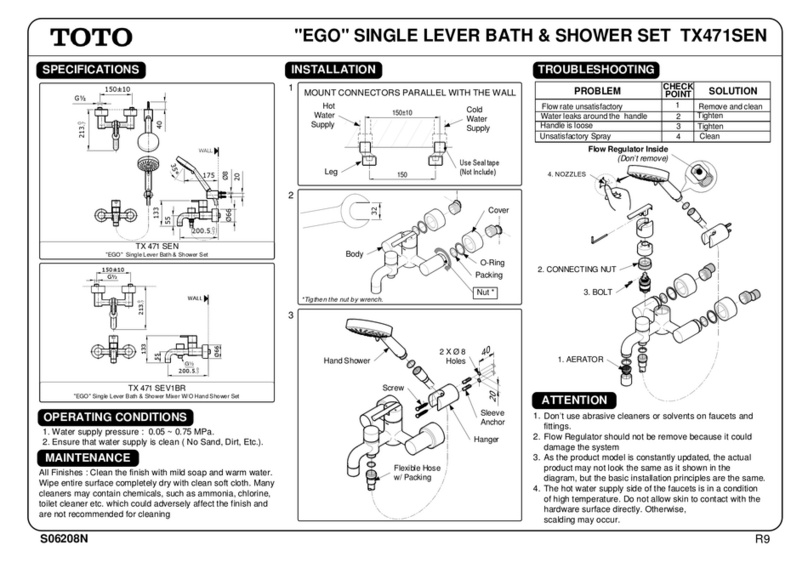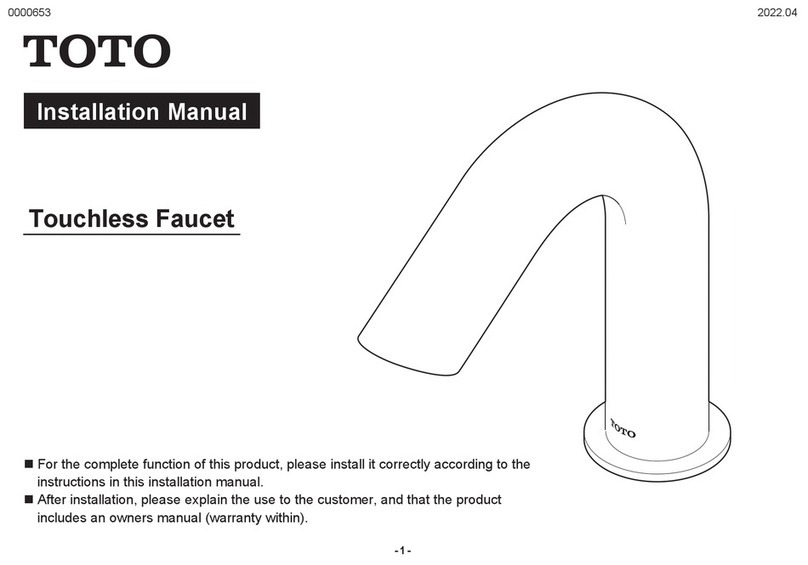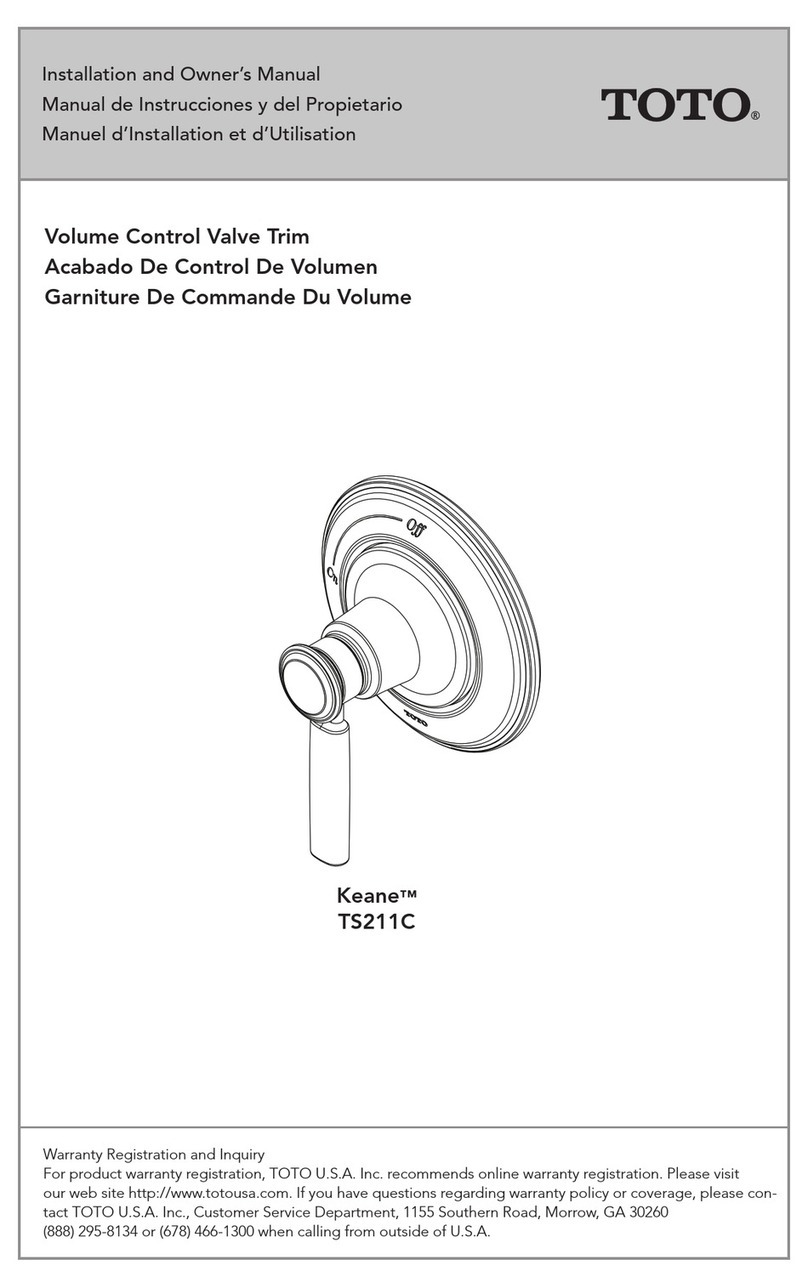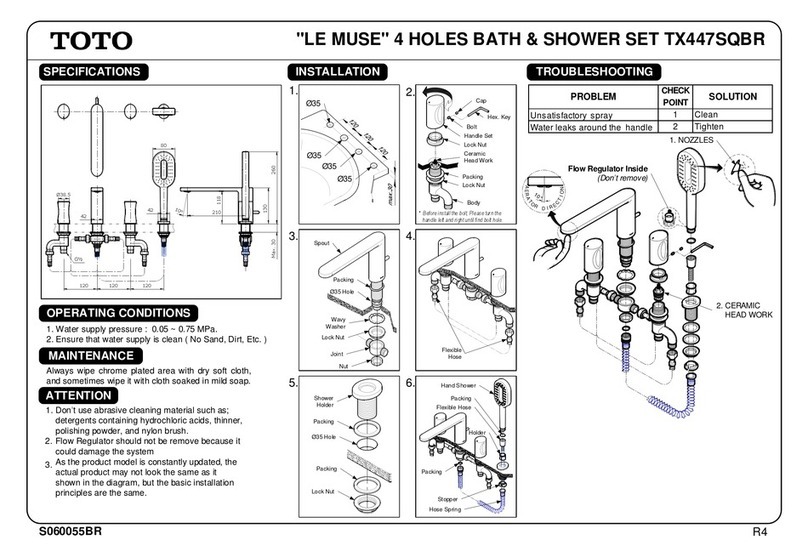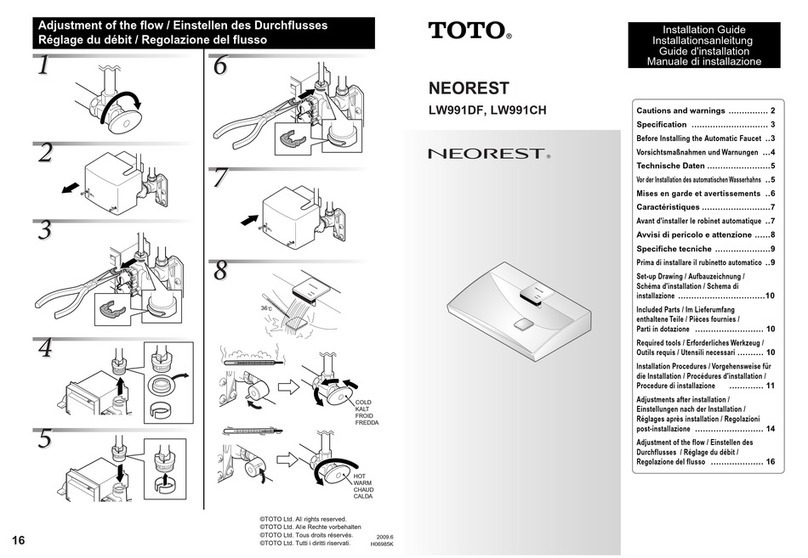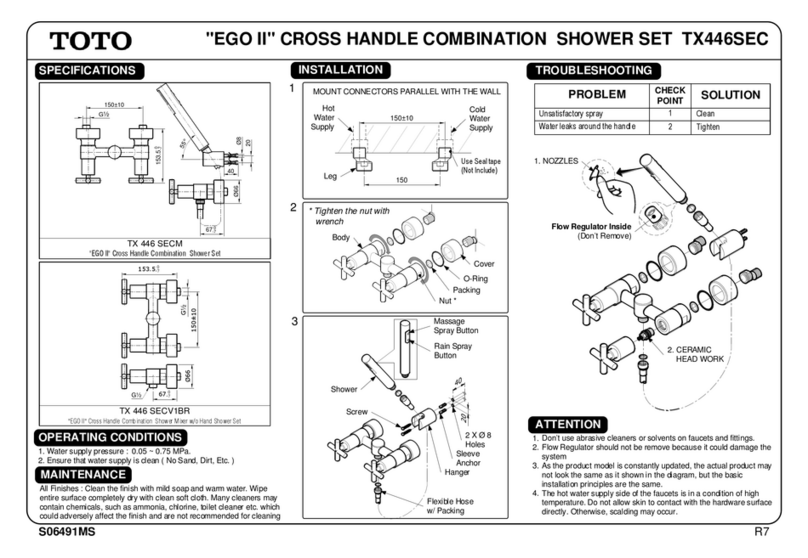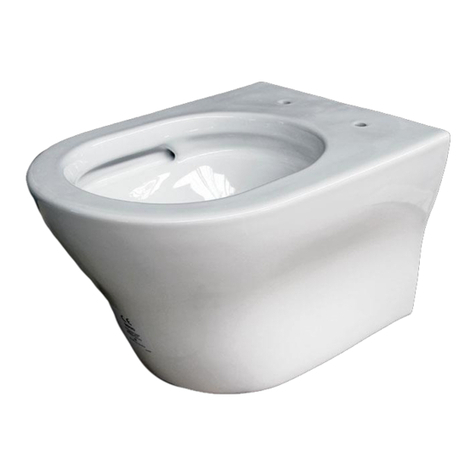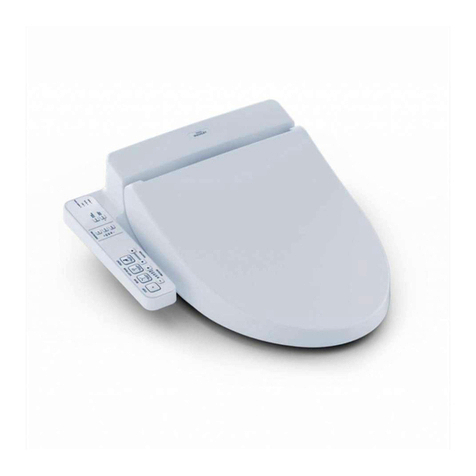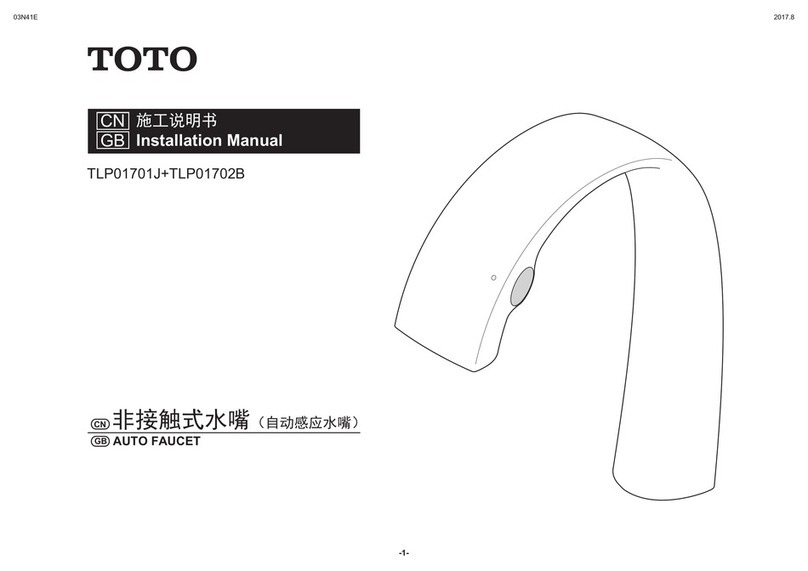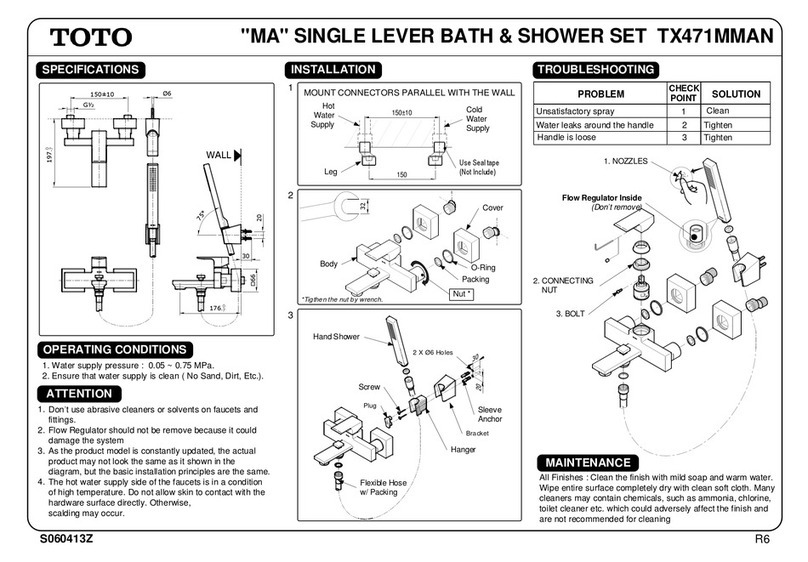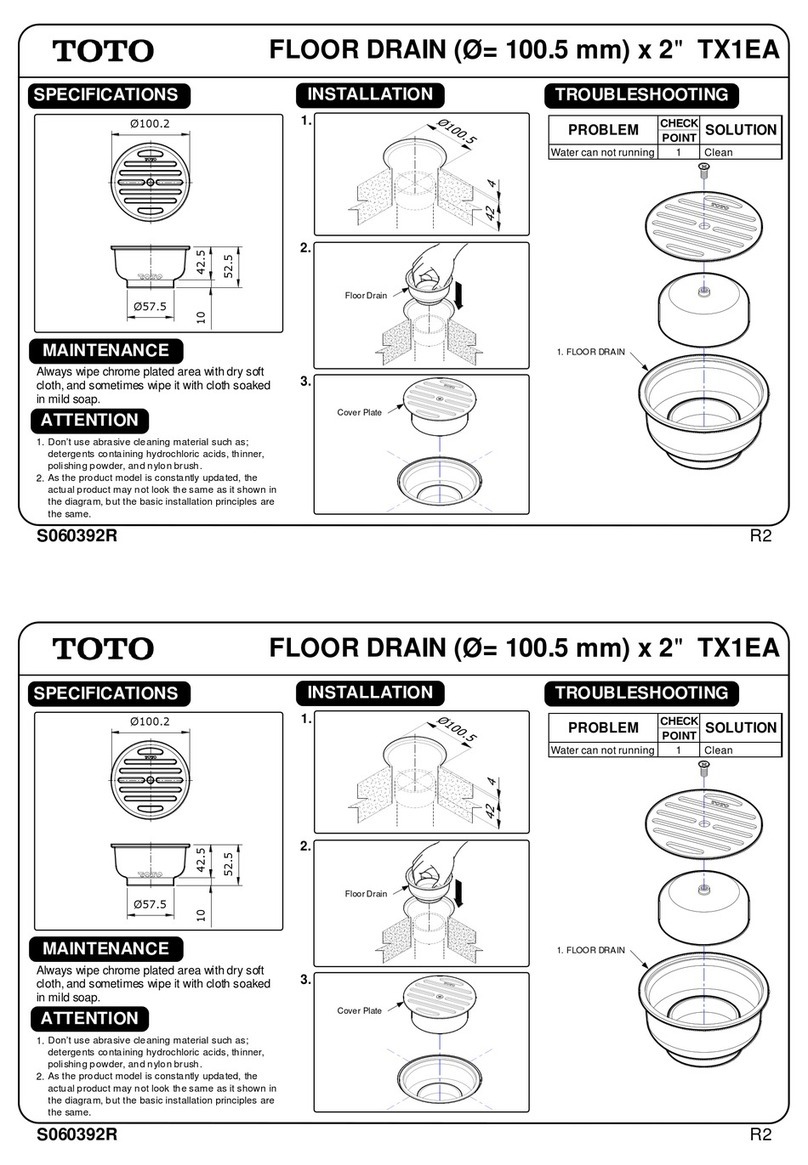
ECOPOWER Concealed Flush Valve
Daughter Card Installation Manual
Replacing the batteries:
1. Open the ush valve front cover plate.
2. Locate the connector for the daughter card and disengage.
3. Carefully pull the daughter card enclosure away from the metal cover to peel the velcro strips apart.
4. Open the daughter card enclosure by loosening captive screw.
5. Remove the four (4) AA batteries and replace with four (4) new AA alkaline batteries.
6. Carefully close the daughter card enclosure. Tighten captive screw. Do not overtighten.
7. Reattach as per installation instructions on reverse.
Follow these instructions carefully. Failure to do so could result in personal injury, risk of re, smoke and/or property damage.
- Handle the product with care when performing maintenance.
- DO NOT pull, twist or damage the wires or connectors. Risk of product malfunction.
- NEVER splash water on the components. This is an electrical device. DO NOT get the components wet. Risk of product malfunction.
Follow these instructions carefully. Failure to do so could cause incorrect data reporting.
- Each daughter card has been electronically paired to a specic valve. DO NOT MIX UNPAIRED SIMILAR COMPONENTS EVEN WHEN VISUALLY IDENTICAL.
- When providing maintenance, please keep track of paired components.
- Make sure paired daughter card reconnects to it’s exact corresponding paired valve.
- Failure to reconnect corresponding paired components will result in product malfunction.
Daughter Card
Enclosure
AA batteries
X 4
FCC:
This device complies with Part 15 of the FCC Rules. Operation is subject to the following two conditions:
1. This device may not cause harmful interference, and
2. This device must accept any interference received, including interference that may cause undesired operation.
Changes or modications not expressly approved by the party responsible for compliance could void the user's authority to operate the equipment.
FCC Interference Statement Part 15.105 (b)
This equipment has been tested and found to comply with the limits for a Class B digital device, pursuant to Part 15 of the FCC Rules. These limits are
designed to provide reasonable protection against harmful interference in a residential installation. This equipment generates uses and can radiate radio
frequency energy and, if not installed and used in accordance with the instructions, may cause harmful interference to radio communications. However,
there is no guarantee that interference will not occur in a particular installation. If this equipment does cause harmful interference to radio or television
reception, which can be determined by turning the equipment off and on, the user is encouraged to try to correct the interference by one of the following
measures:
- Reorient or relocate the receiving antenna.
- Increase the separation between the equipment and receiver.
- Connect the equipment into an outlet on a circuit different from that to which the receiver is connected.
- Consult the dealer or an experienced radio/TV technician for help.
To comply with FCC and Industry Canada RF exposure limits for general population / uncontrolled exposure, the antenna(s) used for this transmitter must
be installed to provide a separation distance of at least 43mm from all persons and must not be operating in conjunction with any other antenna or
transmitter, except in accordance with FCC multi-transmitter product procedures..
Industry Canada:
This Device complies with Industry Canada License-exempt RSS standard(s). Operation is subject to the following two conditions: 1) this device may not
cause interference, and 2) this device must accept any interference, including interference that may cause undesired operation of the device.
Cet appareil est conforme avec Industrie Canada, exempts de licence standard RSS (s). Son fonctionnement est soumis aux deux conditions suivantes: 1)
ce dispositif ne peut pas causer d'interferences. et 2) ce dispositif doit accepter toute interference, y compris les interferences qui peuvent causer un
mauvais fonctionnement de ('appareil.
Under Industry Canada regulations, this radio transmitter may only operate using an antenna of a type and maximum (or lesser) gain approved for the
transmitter by Industry Canada. To reduce potential radio interference to other users, the antenna type and its gain should be so chosen that the equiva-
lent isotropically radiated power (e.i.r.p.) is not more than that necessary for successful communication.
TET2UBi2#SS/TET2LBi2#SS/TET2GBi2#SS/TET3UBi2#SS/TET3LBi2#SS/TET3GBi2#SS
LED Light
MAINTENANCE WARNINGS
MAINTENANCE INSTRUCTIONS
REGULATORY STATEMENTS
